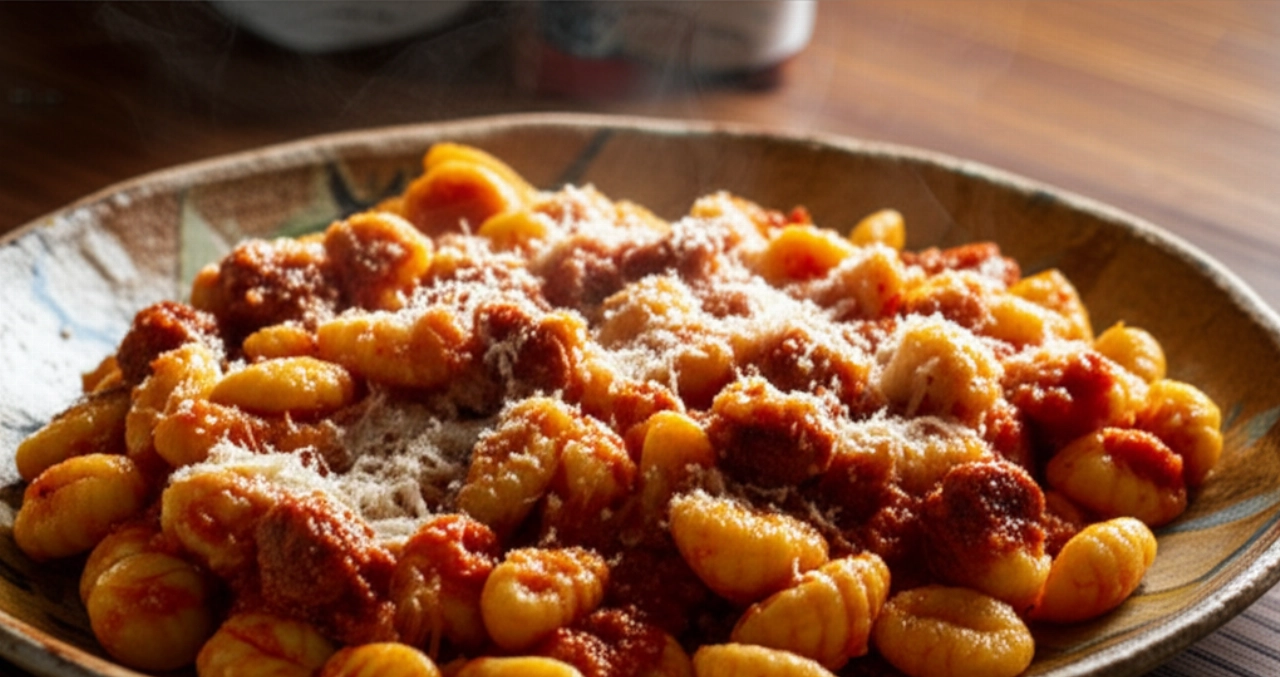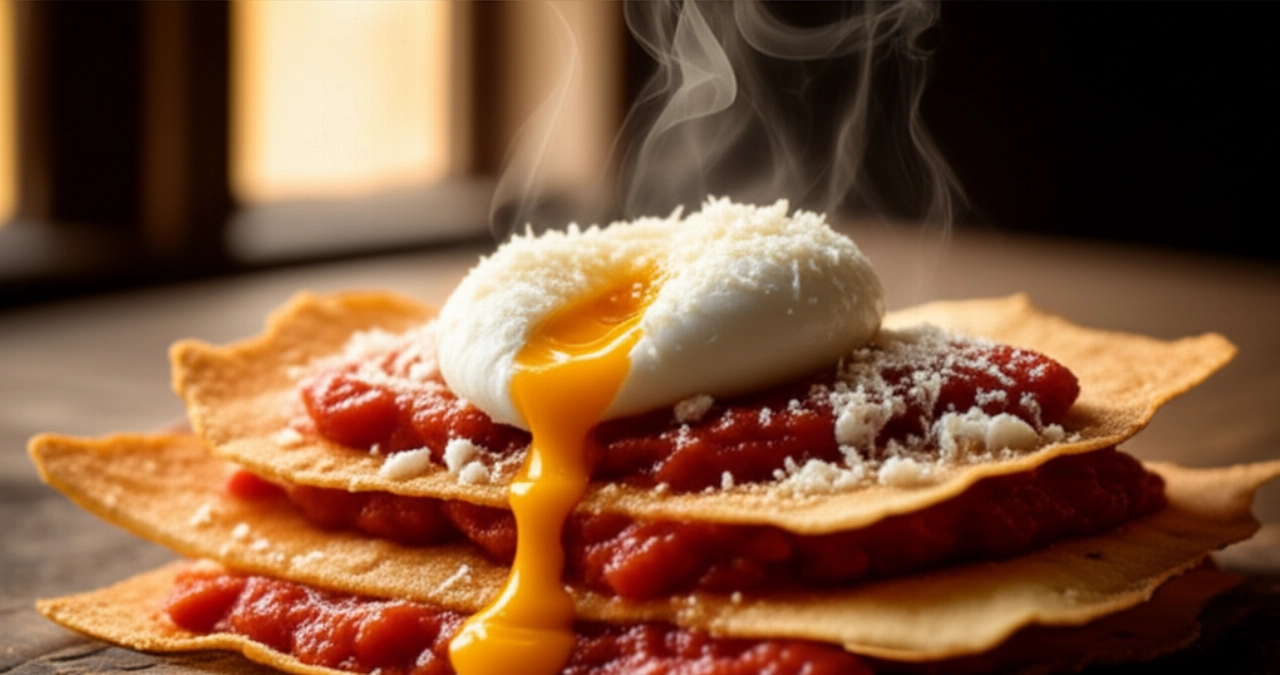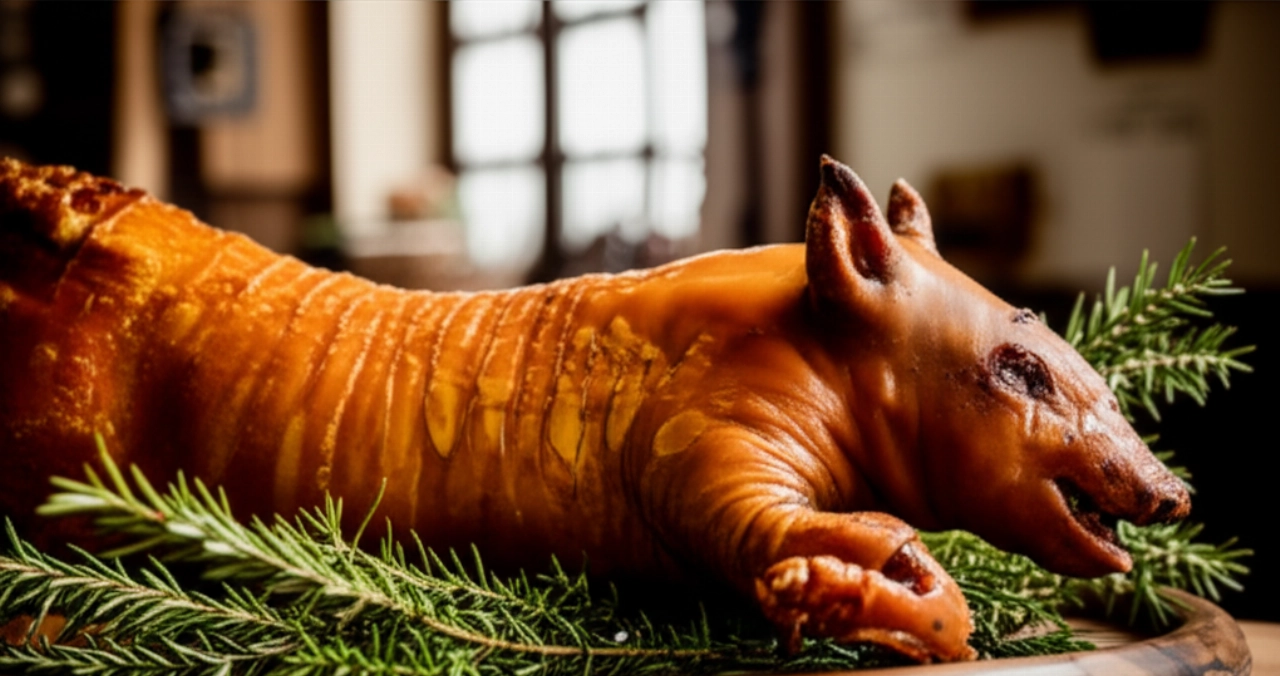Do you dream of bringing to the table a dish that smells of Sardinia, with those ear-shaped ravioli, filled with a soft and flavorful heart? A dish that is not just food, but a story of tradition, of hands kneading, and of authentic flavors that warm the heart.
But perhaps you're afraid of the 'ear-shaped' closure, or you fear that the filling isn't right, or that the dough will break during cooking. Finding the authentic recipe, one that guarantees success and makes you feel like a true Sardinian chef, seems like a challenge.
Make yourself comfortable. Here you won't just find a list of ingredients, but the definitive guide, full of tricks and tips, to prepare perfect Culurgiones d'Ogliastra. Success is guaranteed, and every bite will be an unforgettable journey into true Sardinian cuisine. I will guide you step by step to achieve an impeccable ear-shaped closure and a filling so creamy and flavorful that every bite will be an explosion of taste, without fear of breakage or unbalanced flavors.
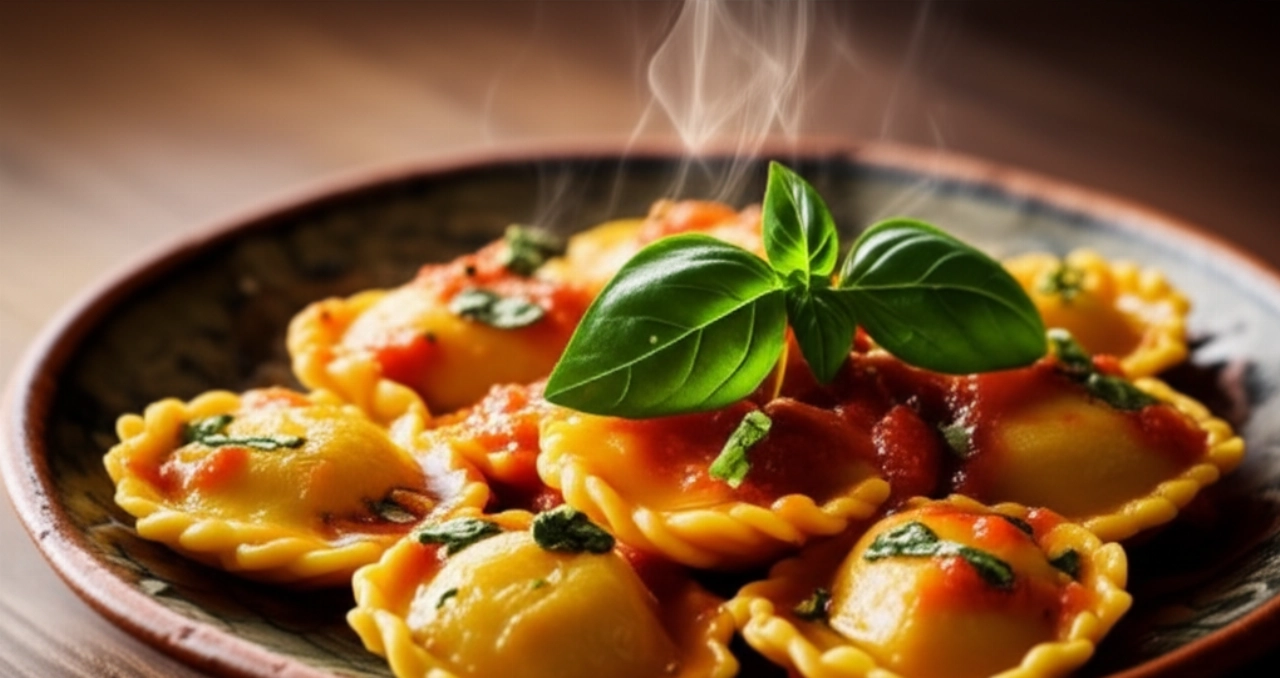
Smart Ingredients: The Choice That Makes a Difference for Your Culurgiones
It's not just a list, but a well-thought-out selection. Each ingredient plays a precise role in ensuring the dish's success.
- For the Dough (approx. 40 Culurgiones):
- Durum wheat re-milled semolina (300g): This is the base, providing elasticity and hold. Do not use only 00 flour, otherwise the dough will be too fragile.
- 00 Flour (200g): To balance the semolina, it makes the dough softer and easier to work with.
- Lukewarm water (approx. 200-250ml): Not cold! Lukewarm water helps develop gluten and makes the dough more elastic. Add it little by little.
- Lard (20g): The secret of Sardinian tradition. It gives softness, flavor, and a unique texture to the dough. If you can't find it, you can substitute with extra virgin olive oil, but the result won't be the same.
- Salt (a pinch): To flavor the dough.
- For the Filling:
- Yellow-fleshed potatoes (500g): They must be starchy, like old potatoes or those used for gnocchi. Boil them with their skins on to prevent them from absorbing water.
- Pecorino Sardo DOP (100g): Strictly Sardinian, aged but not too much, for a strong but balanced flavor. Do not use Pecorino Romano, it is too salty.
- Fresh mint (a good bunch): Essential! It is the soul of the filling, giving freshness and an unmistakable aroma. Do not use dried mint.
- Garlic (1 small clove): Just a hint, finely chopped or crushed and then removed. It should perfume, not dominate.
- Extra virgin olive oil (2 tablespoons): Helps bind the filling and make it velvety.
- Salt and black pepper: To taste, to enhance the flavors.
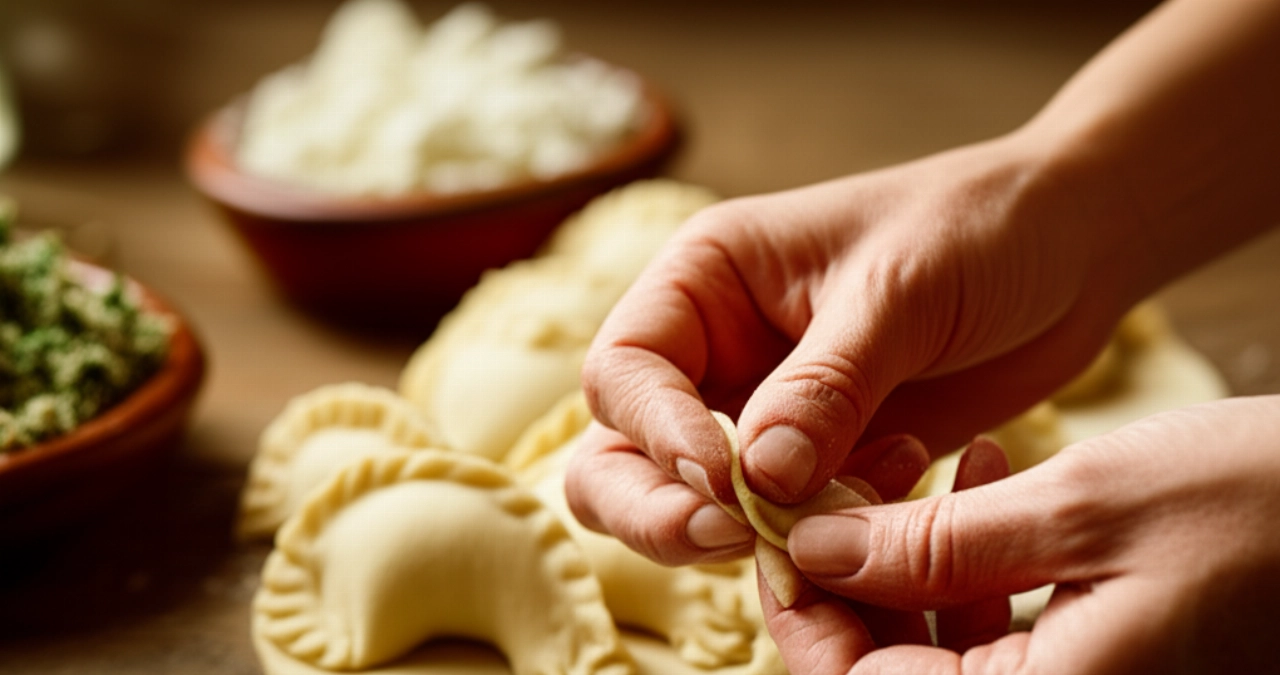
3 Common Mistakes When Preparing Culurgiones (and How to Avoid Them)
I've seen disappointment too many times in the eyes of those who try their hand at Culurgiones. Here are the critical points you need to know to avoid them:
- Dough too hard or too soft: If the dough is too hard, it will break during rolling and sealing. If it's too soft, it will be difficult to work with and will stick. The secret is to add water gradually and knead for a long time, until you get a smooth, homogeneous, and elastic dough that “springs back” when you press it with a finger.
- Watery or too dry filling: Potatoes must be cooked just right (not too much, otherwise they absorb water) and mashed well. The filling should be compact but soft, and should not release liquids. If it's too dry, add a drizzle of oil. If it's too wet, you can add a tablespoon of semolina to absorb the excess.
- Ear-shaped closure that opens during cooking: This is the fear of many! The key is dexterity and the right moisture level of the edges. Make sure the edges are clean and slightly damp (but not wet) before starting the closure. Practice makes perfect; don't get discouraged if the first ones aren't impeccable.
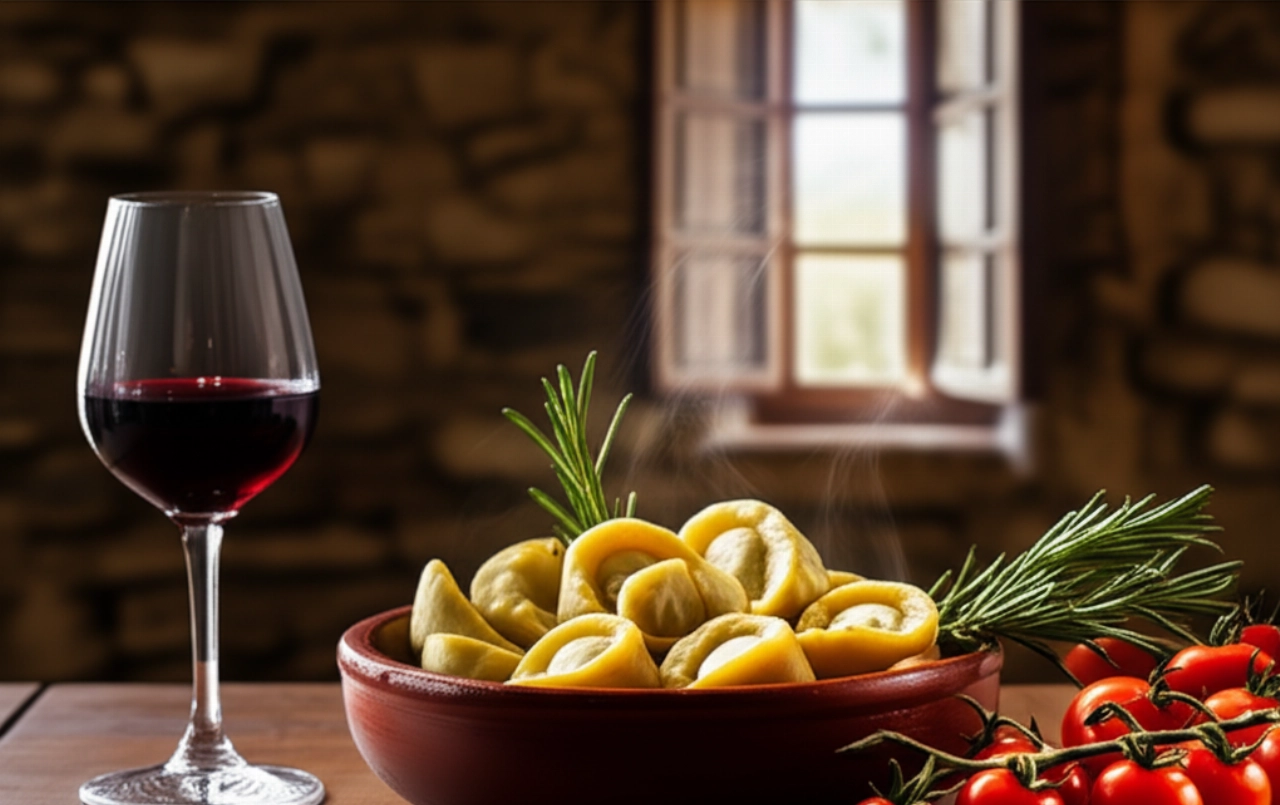
Grandma's Secret: The Magic Touch for Authentic Culurgiones
My grandmother, with her wise hands, taught me that the true magic of Culurgiones lies in patience and love. She always used to say: "Don't rush, the dough feels your hands. And the mint, that must be fresh, fragrant, like the air of our home."
Her foolproof trick for the filling was this: after mashing the potatoes and adding the ingredients, she would let them rest for at least an hour, covered, so that the flavors would blend perfectly and the filling would reach the ideal consistency. Furthermore, she advised me not to skimp on the mint: it's what gives that unmistakable aroma and freshness that balances the flavor of the pecorino.
Let's Prepare Your Culurgiones Together: The Foolproof Step-by-Step Guide
Now that you know the secrets, let's get to work. Follow each step carefully, and success will be guaranteed.
1. Prepare the Perfect Dough
- On a pastry board, combine the re-milled semolina and 00 flour. Form a well in the center.
- Melt the lard in lukewarm water (or heat the oil). Pour the lukewarm water with the lard and a pinch of salt into the center of the well.
- Begin to knead with your hands, incorporating the flour little by little, from the center outwards.
- Work the dough vigorously for at least 15-20 minutes, until you obtain a smooth, homogeneous, and elastic ball. It should be firm but not hard.
- Wrap the dough in plastic wrap and let it rest at room temperature for at least 30 minutes (preferably an hour). This step is essential to make the dough more workable.
2. Prepare the Aromatic Filling
- Wash the potatoes well and boil them with their skins on in salted water until tender (about 30-40 minutes, depending on size). Cooking them with the skin prevents them from absorbing too much water.
- Drain them, peel them while still hot, and mash them with a potato masher or a fork until you get a fine, lump-free puree.
- In a large bowl, combine the potato puree, grated Pecorino Sardo, finely chopped fresh mint, minced garlic (or crushed and removed), extra virgin olive oil, salt, and pepper.
- Mix all ingredients well with a spoon or your hands until you get a homogeneous and compact mixture. Taste and adjust salt if necessary.
- Cover the bowl with plastic wrap and let the filling rest in the refrigerator for at least 30 minutes.
3. Shape Your Culurgiones (The Ear-Shaped Closure)
- Take the dough back and divide it into several parts. On a lightly floured pastry board, roll out each part with a rolling pin (or a pasta machine) until you get a thin sheet (about 1-2 mm).
- Using a pastry cutter or a glass, cut out discs about 7-8 cm in diameter.
- In the center of each disc, place a small amount of filling (about a generous teaspoon). Don't overfill, otherwise it will be difficult to close.
- The Ear-Shaped Closure:
- Fold the disc in half, forming a half-moon. Seal the edges well with your fingers, pressing gently.
- Begin to pinch one corner of the sealed edge, folding a small flap of dough over itself.
- Continue to pinch and fold the edge, one flap after another, overlapping them slightly, as if you were "sewing" the pasta. Proceed in this way along the entire length of the half-moon, until the Culurgione is completely closed.
- The final result should resemble a small ear of wheat. Don't worry if the first ones aren't perfect, practice makes perfect! (If you have difficulty, search for an online video tutorial; it will help you visualize the movement).
- Arrange the Culurgiones one by one on a tray dusted with semolina, spacing them out to prevent sticking.
4. Cooking and Seasoning
- Bring a large pot of salted water to a boil.
- Gently drop the Culurgiones into the boiling water. Cook them for about 3-5 minutes after they float to the surface, or until the dough is tender but still al dente.
- Meanwhile, prepare the seasoning. The most traditional is a simple fresh tomato sauce with basil, or melted butter with sage and a sprinkle of Pecorino Sardo.
- Drain the Culurgiones with a slotted spoon and season them immediately.
Tips and Frequently Asked Questions about Culurgiones
Here are some answers to the most common questions you might have, to clear any doubts and make you feel even more confident.
Can I use another cheese instead of Pecorino Sardo?
For an authentic flavor, Pecorino Sardo is irreplaceable. If you absolutely can't find it, you can try a more delicate semi-aged Pecorino, but the aromatic profile will change. Avoid Pecorino Romano, which is too salty and pungent for this delicate filling.
What if I can't manage the ear-shaped closure?
It's normal! The ear-shaped closure requires practice. Don't get discouraged. The first few times, you can simply seal the edges with a fork, as you would for classic ravioli. The taste will be the same, and you can practice the ear shape later. The important thing is that the filling doesn't leak out.
Can I freeze Culurgiones?
Absolutely yes! After shaping them, arrange them on a floured tray and place them in the freezer for about an hour, until they are firm. Then transfer them to freezer bags. They can be stored for 2-3 months. Cook them directly from frozen in boiling water, adding a couple of minutes to the cooking time.
What is the ideal seasoning for Culurgiones?
Tradition calls for simple seasonings that enhance the filling. The most classic are: fresh tomato sauce and basil, melted butter with sage and a sprinkle of Pecorino, or simply a drizzle of excellent extra virgin olive oil and grated Pecorino. Avoid overly elaborate sauces that would overpower the delicate flavor of the filling.
Can I prepare the dough or filling in advance?
Yes, you can prepare the dough the day before and store it wrapped in plastic wrap in the refrigerator. Let it return to room temperature before rolling it out. The filling can also be prepared a day in advance and stored in the refrigerator in an airtight container. In fact, the flavors will blend even better!
A Masterpiece of Flavor and Tradition Awaits You!
There you have it! Now you no longer just have a recipe, but all the secrets to bring to the table a dish that tastes of home, of Sardinia, of tradition, and of love. A true ode to authentic cuisine, which will make you proud of every single Culurgione.
Don't be afraid to experiment. Cooking is an act of creativity and sharing. But start from this solid base, and you'll see that applause won't be lacking. Every Culurgione you close will make you more experienced, and soon the ear-shaped closure will hold no more secrets for you.
Have you tried our recipe? We're very curious to see your masterpiece! Leave a comment below, tell us how it went, or share a photo on Instagram by tagging @CercaRicette.it. If you loved these Culurgiones, you can't miss our recipe for Homemade Fresh Pasta or for a Sardinian main course like Roast Porceddu.
